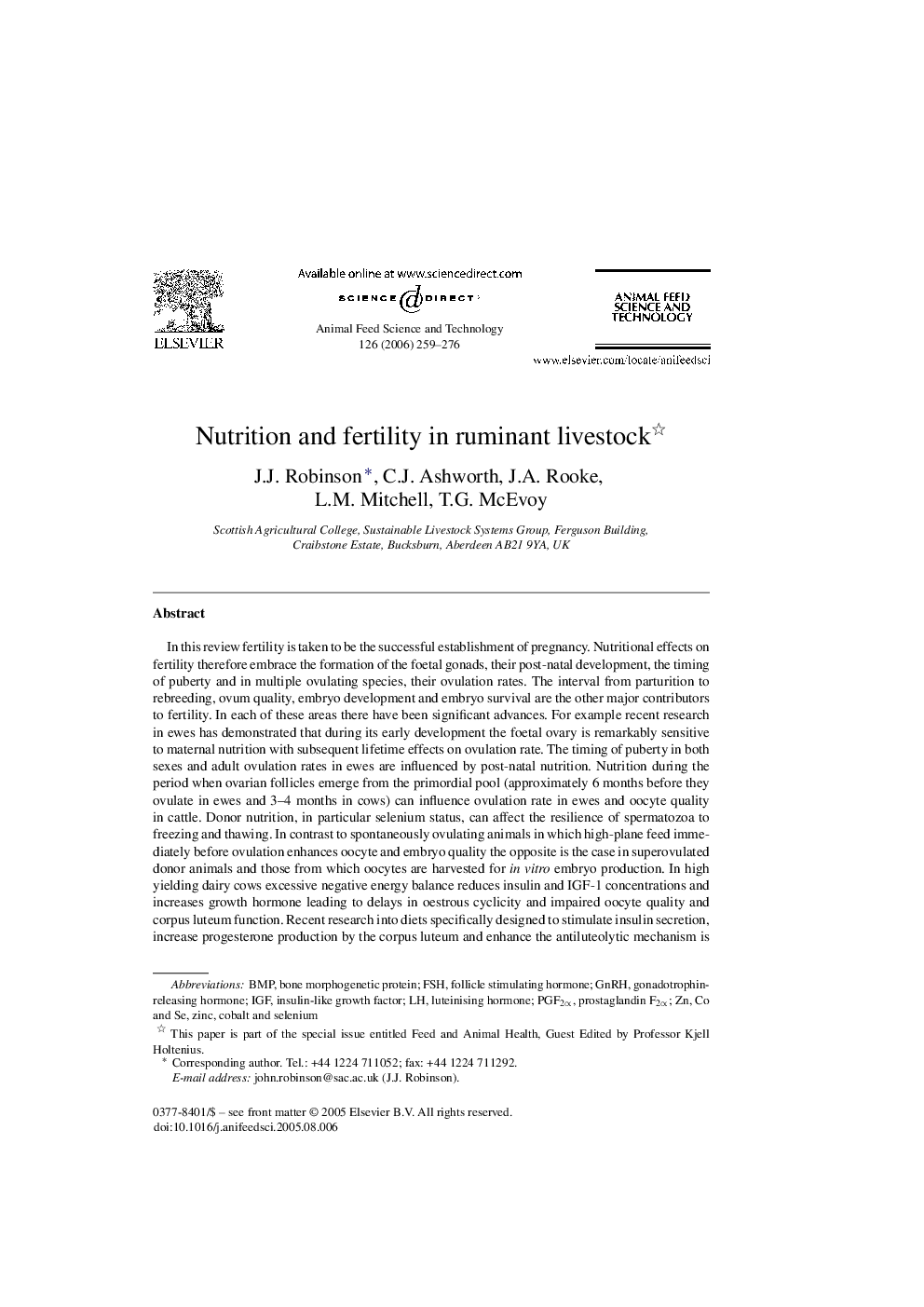| کد مقاله | کد نشریه | سال انتشار | مقاله انگلیسی | نسخه تمام متن |
|---|---|---|---|---|
| 2421255 | 1552502 | 2006 | 18 صفحه PDF | دانلود رایگان |

In this review fertility is taken to be the successful establishment of pregnancy. Nutritional effects on fertility therefore embrace the formation of the foetal gonads, their post-natal development, the timing of puberty and in multiple ovulating species, their ovulation rates. The interval from parturition to rebreeding, ovum quality, embryo development and embryo survival are the other major contributors to fertility. In each of these areas there have been significant advances. For example recent research in ewes has demonstrated that during its early development the foetal ovary is remarkably sensitive to maternal nutrition with subsequent lifetime effects on ovulation rate. The timing of puberty in both sexes and adult ovulation rates in ewes are influenced by post-natal nutrition. Nutrition during the period when ovarian follicles emerge from the primordial pool (approximately 6 months before they ovulate in ewes and 3–4 months in cows) can influence ovulation rate in ewes and oocyte quality in cattle. Donor nutrition, in particular selenium status, can affect the resilience of spermatozoa to freezing and thawing. In contrast to spontaneously ovulating animals in which high-plane feed immediately before ovulation enhances oocyte and embryo quality the opposite is the case in superovulated donor animals and those from which oocytes are harvested for in vitro embryo production. In high yielding dairy cows excessive negative energy balance reduces insulin and IGF-1 concentrations and increases growth hormone leading to delays in oestrous cyclicity and impaired oocyte quality and corpus luteum function. Recent research into diets specifically designed to stimulate insulin secretion, increase progesterone production by the corpus luteum and enhance the antiluteolytic mechanism is providing new opportunities for improving dairy cow fertility with associated benefits for suckling beef cows. The move to a more mechanistic approach in dealing with nutritional studies of fertility is providing information that can readily be adapted for the formulation of more efficient feeding strategies across a diverse range of ruminant species and production systems.
Journal: Animal Feed Science and Technology - Volume 126, Issues 3–4, 9 March 2006, Pages 259–276